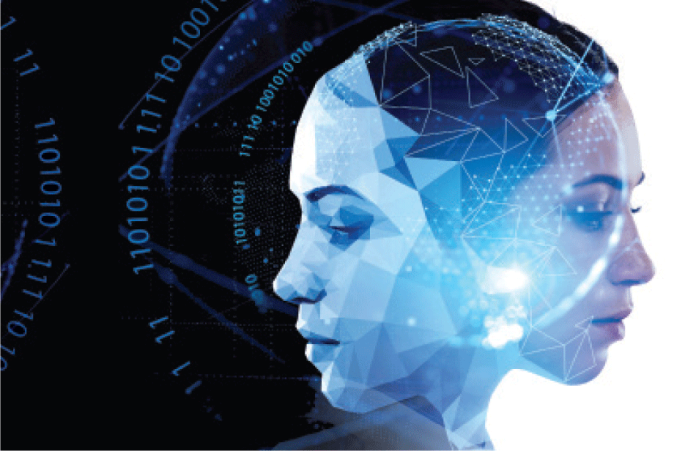By Anna Lahtinen and Heikki Kallasvaara
Finland is experiencing dynamic growth in the number of companies that are developing and / or using artificial intelligence (AI) in their business. This is illustrated by comparing the total of 947 such companies in 2019 with only 358 in 2017. Furthermore, AI-focused companies may be found across the country, but three out of every four companies in Finland that are developing or using AI are, nonetheless, located in Uusimaa region (ETLA 2019). The body of companies developing or employing AI is currently rather homogeneous and mainly composed of software development and programming companies. However, efforts are being made to grow the AI capabilities of Finnish companies across sectors, with a special focus on the SMEs that form 98 per cent of the country’s registered businesses.
KEY TAKEAWAYS
- Finland is focusing on building AI ecosystems, where businesses, researchers, and policymakers work together to develop and implement AI solutions that benefit society.
- To achieve this goal, Finland is investing in education and research, creating a favorable policy environment, and promoting collaboration and openness.
- Finland’s approach to AI is centered on human-centric values, such as trust, transparency, and accountability, and aims to harness AI’s potential to create a better future for all.
Corona has invigorated digitalisation and the demand for AI-based solutions
Finland’s strength in the rapidly developing field of AI is the agile business environment that enables and supports collaboration between companies, research and education organisations, and society at large (Ministry of Economic Affairs and Employment 2017). Finland’s roadmap for AI (Technology Industry of Finland 2020) brings forward four building blocks.
First, it calls for responsibility to be built in at all stages of development and highlights that AI is not a value in itself. In Finland, AI is there to solve challenges relevant to a socially and ecologically sustainable society, which fuels positive discussion and promotes the use of AI solutions. Furthermore, encouraging companies to develop digital web-based service solutions in addition to physical products helps to safeguard business in situations such as the COVID-19 pandemic and supports reaching the goals on carbon neutrality.
Second, creating and sharing relatable AI stories promotes understanding and acceptance of AI. As decision makers in companies and other organisations become familiar with the potential of artificial intelligence, readiness to invest in the new technology increases. These investments will further create new positive examples that will spread through public debate and networks and inspire other companies.
Third, the aim of Finland’s AI ecosystem is to be diverse and open. The functioning artificial intelligence ecosystem is characterised by close and mutually beneficial cooperation between research, industry, start-ups, and public administration. A vibrant ecosystem attracts motivated and diverse experts from diverse backgrounds, which in turn creates more inspiring activities, investments, and successes.
Fourth, AI enables and positively contributes to business renewal, with AI viewed as a part of continuous development. This is reinforced by enthusiastic people in organisations who, as a result of getting support to operate and experiment, are able to obtain credibility and resources. As the first AI successes are made visible within organisations, understanding of the technology spreads. Organisations learn to evaluate AI applications from a business-oriented perspective and invest in developing AI capabilities in a balanced way.
Five AI trends in Finland to keep an eye on
Historically, Finland has strong technical and IT skills to build upon and is, therefore, one of the AI pioneer countries in Europe. The work is being approached from multiple angles, five of which are introduced next.
- Making AI available to SMEs. AI contributes to the adaptability to change associated with the digitalisation of SMEs. However, SMEs across Europe struggle to embrace AI, although it is they who have the greatest potential to benefit from AI. This is the challenge and the opportunity recognised at a European level. On a positive note, numerous AI initiatives, programmes, and accelerators are currently being developed and launched to tackle the issue (example: AI-TIE). There is also a greater interest on the part of SMEs part in AI in comparison to, for instance, a couple of years back. This is accompanied by a willingness to commit to learning about AI and embracing it as a part of business processes and new product and service development.
- The “train the trainer” principle in equipping business advisors with AI understanding. Chambers of commerce, business development centres, and start-up hubs are homes for services that are offered to companies locally. This implies constant dialogue with the company networks on behalf of business advisors employed by these organisations. Increasing the business advisors’ understanding of AI helps to make it a part of their company interactions – spreading the knowledge about AI-related business opportunities.
- Creating industry-specific knowledge and skills in AI. Taking the AI discussion from the general level towards industry-specific training, mentoring, and accelerator activities is one of the key current AI trends. This enables the creation and deepening of industry-specific AI expertise and thus supports companies operating in the industry. Recent examples of this include AI-TIE AI Accelerators in the cleantech sector, health and medtech.
- The social and human-centric dimension is essential. There is an ongoing discussion and research stream dedicated to understanding how AI impacts work life at the level of individuals, teams, and organisations. The human-centric view is also taken in the development of AI-related legislation within the EU.
- Cooperation and ecosystem focus. Current policies on the development of innovation ecosystems at the EU level emphasise the extension of the concept of innovation to include social, technological, and operational innovations as part of the ecosystem idea. This is considered in the current AI RDI projects and in building AI ecosystems, in which SMEs, large companies, educational institutes, and other key players work synergistically together and offer their products and services. Their aim in doing so is to increase business and knowledge transfer between smaller and larger, more-experienced and less-experienced organisations.
years and are currently high among Finnish companies and SMEs.
In conclusion, AI-related work in Finland takes a holistic view, starting with individuals and human impact and moving towards larger constructs, such as ecosystem-level thinking and action. The interest and the motivation towards AI have advanced in the recent years and are currently high among Finnish companies and SMEs especially. It is, therefore, the ongoing task and aim to create the conditions to match companies’ AI pursuits with the necessary education and support tools, expertise, and networks.
This article was originally published on March 20, 2023.
About the Authors
 Dr. Anna Lahtinen, DBA, Senior Researcher, Entrepreneurship and Business Renewal, Haaga-Helia University of Applied Sciences, Helsinki, Finland. Anna specialises in the transformation of work life from various perspectives, including the impact of AI, robotics and new technologies, innovation management and entrepreneurship, evolution of psychological contract, gender roles and women’s careers. Anna has close to 20 years of professional, industry, entrepreneurial, start-up and academic experience in Finland, across Europe and globally. Anna is an internationally published scholar and a recipient of the “Academic Paper Most Relevant to Entrepreneurs Award” presented by the United States Association for Small Business and Entrepreneurship. She is a long-term affiliate and invited professor with top international Triple Crown accredited business schools. Her ongoing RDI projects include understanding the role of artificial intelligence, robotics and new technologies in work life, including individual, team dynamics and organisational levels. See, for example, AI-TIE – AI Technology Innovation Ecosystems for Competitiveness of SMEs. Anna’s other recent research and development contributions have focused on gender as a factor in financial compensation and career progress, entrepreneurial leadership as a key competence of knowledge workers, circular-economy digital marketplace creation, and cross-industry co-development and co-innovation work that enables business renewal.
Dr. Anna Lahtinen, DBA, Senior Researcher, Entrepreneurship and Business Renewal, Haaga-Helia University of Applied Sciences, Helsinki, Finland. Anna specialises in the transformation of work life from various perspectives, including the impact of AI, robotics and new technologies, innovation management and entrepreneurship, evolution of psychological contract, gender roles and women’s careers. Anna has close to 20 years of professional, industry, entrepreneurial, start-up and academic experience in Finland, across Europe and globally. Anna is an internationally published scholar and a recipient of the “Academic Paper Most Relevant to Entrepreneurs Award” presented by the United States Association for Small Business and Entrepreneurship. She is a long-term affiliate and invited professor with top international Triple Crown accredited business schools. Her ongoing RDI projects include understanding the role of artificial intelligence, robotics and new technologies in work life, including individual, team dynamics and organisational levels. See, for example, AI-TIE – AI Technology Innovation Ecosystems for Competitiveness of SMEs. Anna’s other recent research and development contributions have focused on gender as a factor in financial compensation and career progress, entrepreneurial leadership as a key competence of knowledge workers, circular-economy digital marketplace creation, and cross-industry co-development and co-innovation work that enables business renewal.
 Heikki Kallasvaara holds an MSc degree in Biophysics and currently serves as Senior Advisor at the Helsinki-Uusimaa Regional Council, which he joined in 2016. His tasks include policy development, EU-level funding and project support, especially in the field of industrial modernisation and innovative services. Helsinki-Uusimaa Regional Council has funded several projects addressing Digital and Green Transitions. Prior to this task, Heikki held the position of director at the University of Helsinki, Research and Innovation Services. His experience also includes a five-year stint at the Directorate General for Research at the European Commission, where his responsibilities covered both policy and programme development (RDI), especially on new and evolving technologies. Heikki started his career in the private sector, with management positions in the diagnostics industry. This early insight into a global, cross-cultural, and goal-oriented business environment served him well in his later public sector duties. He has served as a board member in two high-tech start-up companies and one consultancy.
Heikki Kallasvaara holds an MSc degree in Biophysics and currently serves as Senior Advisor at the Helsinki-Uusimaa Regional Council, which he joined in 2016. His tasks include policy development, EU-level funding and project support, especially in the field of industrial modernisation and innovative services. Helsinki-Uusimaa Regional Council has funded several projects addressing Digital and Green Transitions. Prior to this task, Heikki held the position of director at the University of Helsinki, Research and Innovation Services. His experience also includes a five-year stint at the Directorate General for Research at the European Commission, where his responsibilities covered both policy and programme development (RDI), especially on new and evolving technologies. Heikki started his career in the private sector, with management positions in the diagnostics industry. This early insight into a global, cross-cultural, and goal-oriented business environment served him well in his later public sector duties. He has served as a board member in two high-tech start-up companies and one consultancy.
References
- ETLA (2019). “Digital Barometer 2019”. Facts and statistics credit: Finland Statistics Center, company register, Vainu.io; ETLA calculations: link, visited 8 September 2021.
- Ministry of Economic Affairs and Employment (2017). “Finland’s Age of Artificial Intelligence”. Issue 47/2017: link, visited 8 September 2021.
- Technology Industry of Finland (2020). “AI Finland in 2021”. Published 18 December 2020: link.




































